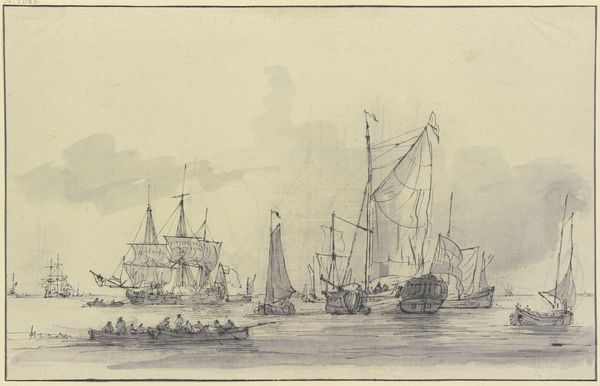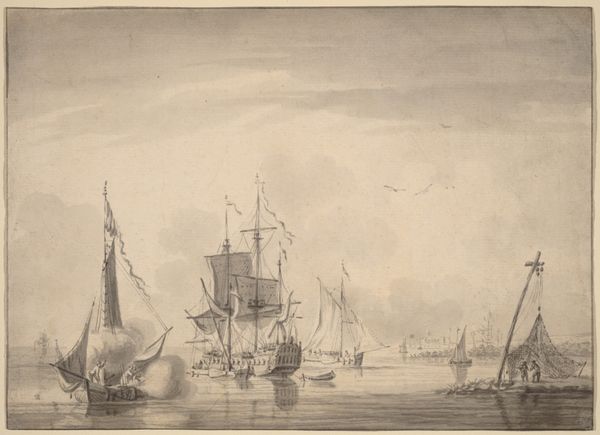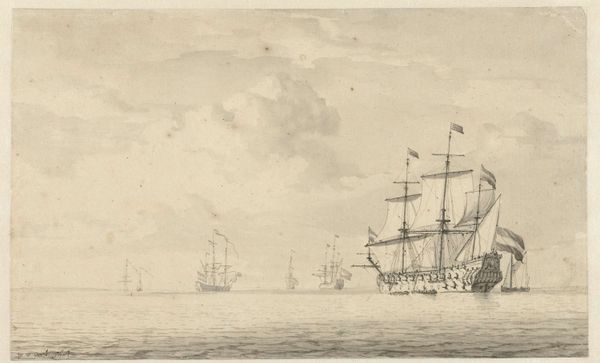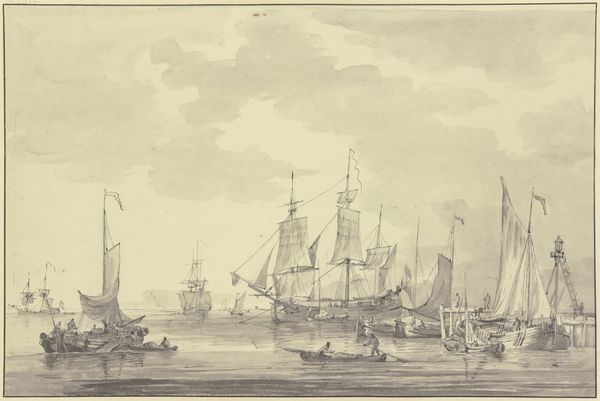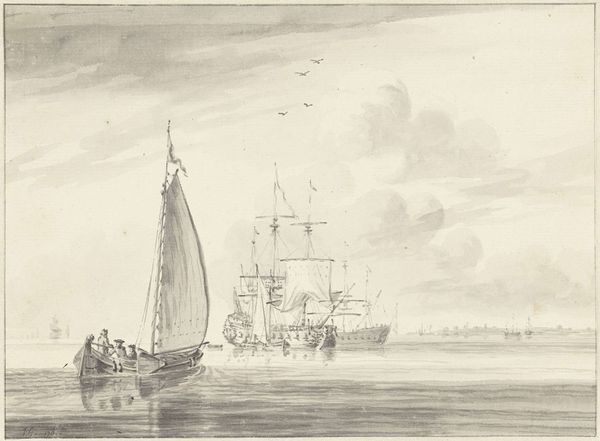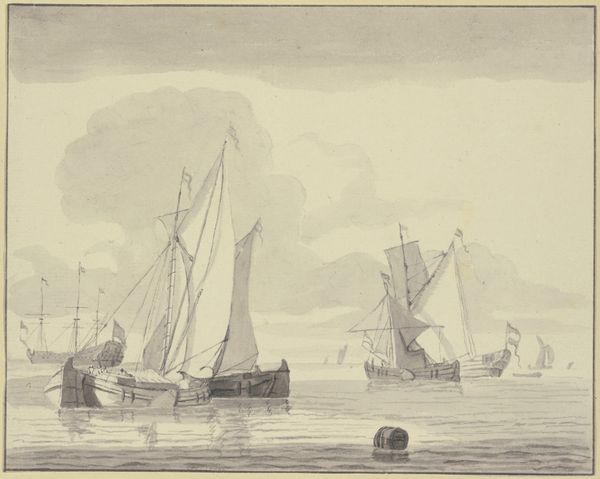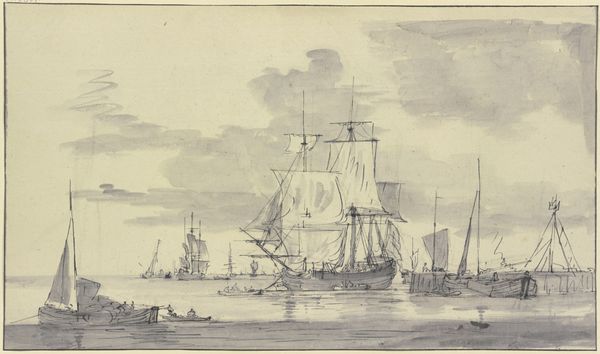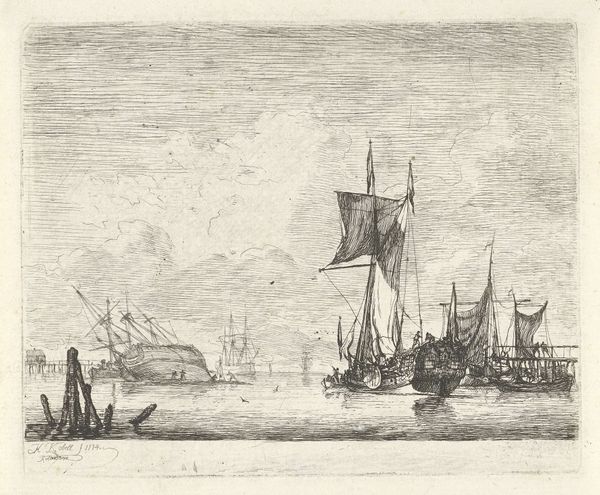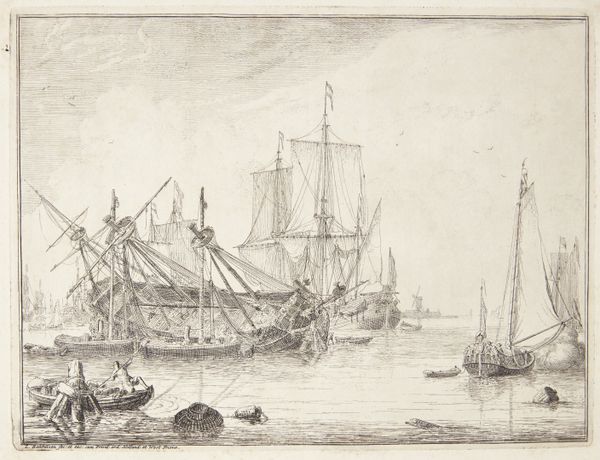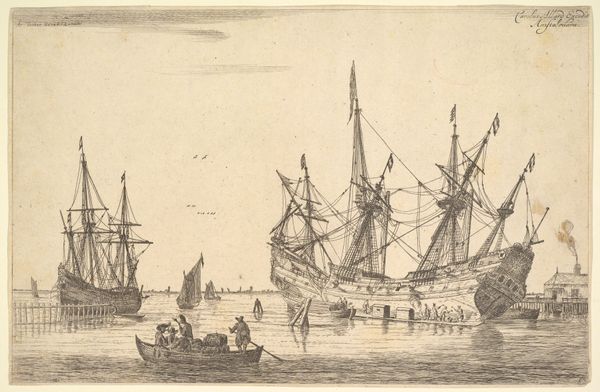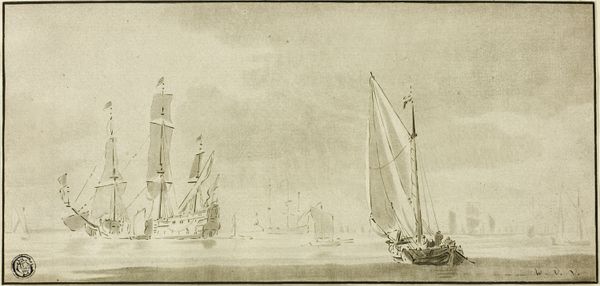
drawing, pencil
#
drawing
#
landscape
#
pencil
#
realism
Dimensions: sight size: 21.4 x 39.4 cm (8 7/16 x 15 1/2 in.)
Copyright: National Gallery of Art: CC0 1.0
Curator: Here we have Eugène Boudin’s "Coastal Landscape with Shipping," a pencil drawing created around 1858. The fleet sits atop the surface of the sea, with very light yet textured marks across the paper to imitate the surface of the clouds. What's your initial take on this, Editor? Editor: It evokes a sense of quiet industry, doesn’t it? The ships imply trade and travel, but the soft pencil strokes lend a delicate, almost melancholy mood. I am curious, what type of pencils did Boudin have in his toolkit at this point in time? Curator: The use of graphite is interesting because it was becoming increasingly available in standardized forms, contributing to a wider democratization of art-making. These works are quick, economical, and can be mass produced. Its origins are quite different than earlier means of visualizing work. It signals an intent to bring production closer to the masses, and document landscapes impacted by commerce and resource exploitation. Editor: True. I also see these sailing ships—motifs of exploration and expanding horizons—and connect that symbolism with the cultural optimism of the mid-19th century, at least for some people and in some places. In contrast to older, royalist artforms, the rising prevalence of landscapes of industrial labor can be associated with an early rise in democratic thinking across Europe, as well. The sea holds stories, Editor! It whispers of voyages, exchanges, and perhaps, anxieties about an uncertain future. The way it mirrors the sky seems quite potent here, like a stage between us and the heavens. Curator: That relationship between the materials, the setting, and these symbols opens up compelling questions, doesn't it? What class of people are sailing those ships, and who sees this as an ideal scene of democratic expansion and exploration? Editor: A critical question! Curator: Exactly! It adds a richness to the image and complicates how we interpret it from a distance. It reminds us to constantly re-examine and re-evaluate, especially what lies at the very core of making something. Editor: Precisely! That’s something I hope every visitor here picks up. The past is always present, especially through potent and accessible art like this one.
Comments
No comments
Be the first to comment and join the conversation on the ultimate creative platform.
